Octopuses Have Zero Bones is one of the best books of the year. Granted, it is very early in 2023, but that’s OK because it was technically released in September of 2022. We’re not going to let a little technicality like that get in the way of calling this book an instant classic and a ‘best of’, whichever year you want to put it in. One thing that we ascribe to is treating kids as smart as you want them to be. When our own children were younger we did it that way and it’s the way that I teach my classes, regardless of the grade. Octopuses Have Zero Bones is a counting book, but it’s so much more than just a book that’ll teach counting to toddlers.
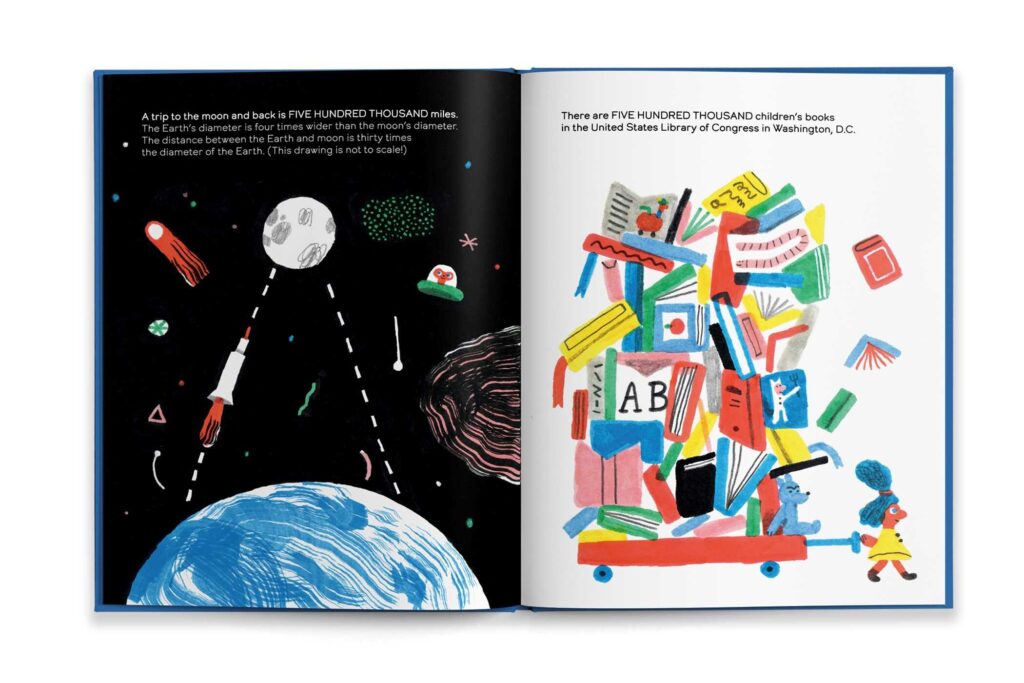
It’s a scientific book that gives multiple examples of multiplying to the power of 10. It drives home the point that all insects have six legs. You’ll learn that fluorine has nine protons and that the number of a proton in an atom’s nucleus determines its properties. Pure water has a pH of seven. There are forty thousand grains of rice in a two-pound bag of rice.
All of those facts and dozens upon dozens of others are in the book. At first, you might think that things like that are too advanced for those audiences that are learning to count. You are correct to an extent. Most of those pre-k kids will be too wily to handle it by themselves. You could read it to them and they’ll be enthralled by the vibrant colors and the short, albeit, sometimes complex sentences. It’s those couple of long sentences that’ll inhibit kids younger than six from fully loving and appreciating the book’s intelligence and weirdness.
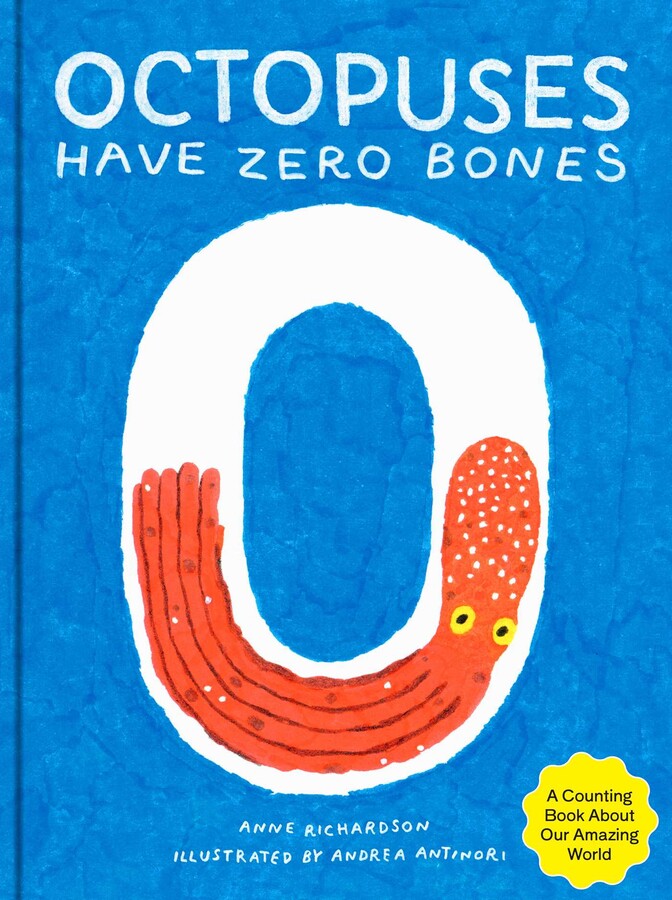
The illustrations are artistic, very colorful, sublime, and trippy. Illustrator Andrea Antinori’s style is reminiscent of others whom I really like, but I’m at a loss as to who it resembles most. They’re softly illustrated, with loose edges and lots of contrasting colors.
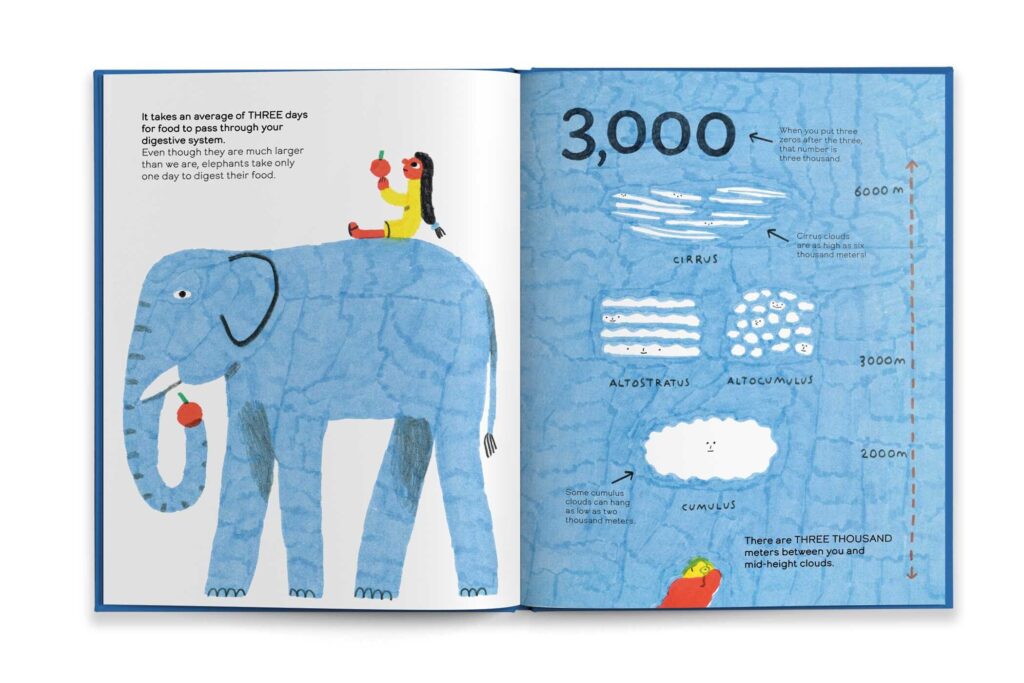
The text by Anne Richardson starts out simple with each different number. Trillium flowers have three petals, for example. But then, it builds on that and introduces readers to the sloth who has three fingers on each hand. It follows that up with a sloth fact and segues into the fact that it takes three days for food to pass through our digestive system. Octopuses contrast that with an elephant, who only takes one day, and goes on to teach us that a black bear’s heart beats 3,000 times every hour, a giant sequoia tree, and an overview of how high the clouds are. See, this is a really smart book that’s disguised itself as a simple counting book.
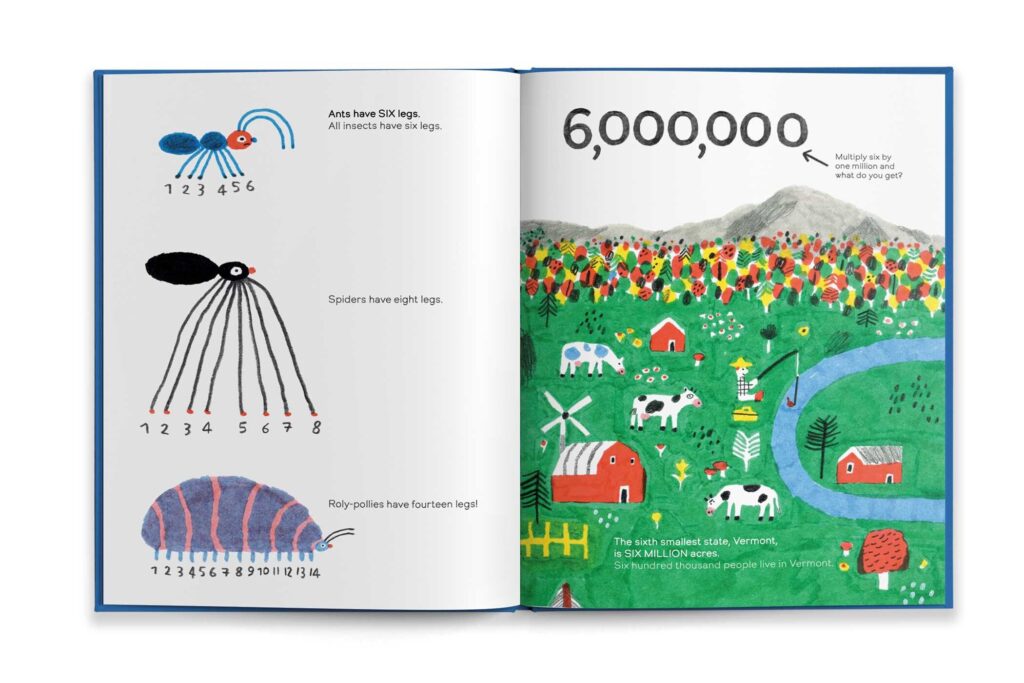
Turn to any page in Octopuses Have Zero Bones and you’ll have fun. You’ll also learn something and depending on how old you are your teeter-totter of enjoyment to education will pivot accordingly. As an older reader, ours was always in the middle of the spectrum, we had fun and learned something. Younger readers will have more fun than actively learning, but it’ll plant those seeds of curiosity that are so important. This is the same species that sprout interest in the Nat Geo Kids books that every child seems to have germinated within them when they’re in third or fourth grade.
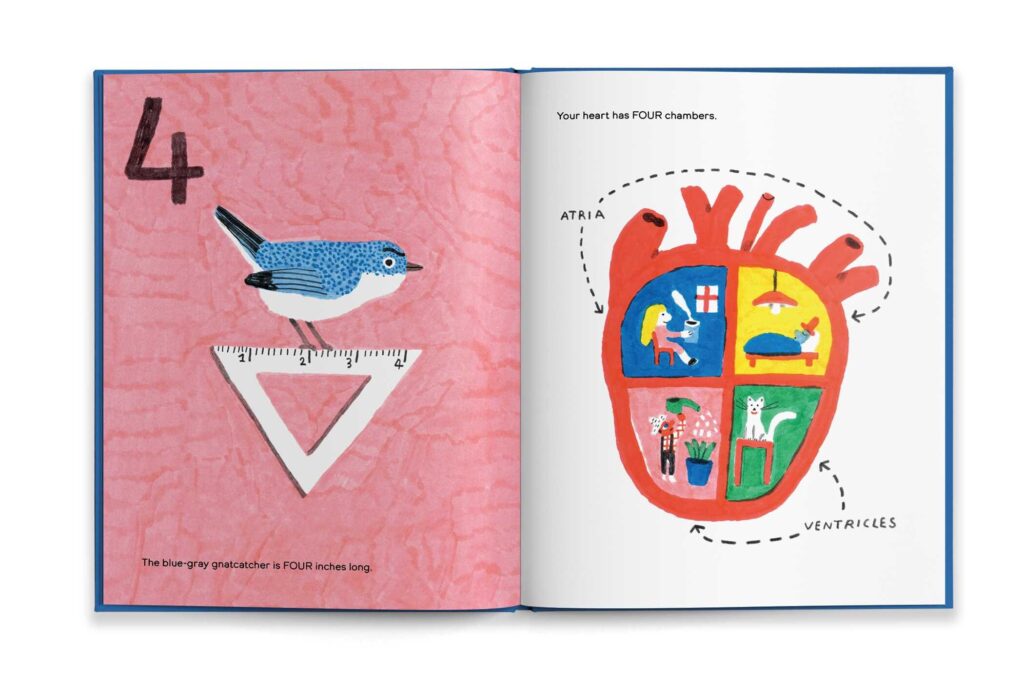
Octopuses Have Zero Bones is a different kind of book animal in that it’s disguised as an illustrated counting book. In this case, the ink cloud that the book’s titular character emits allows readers to come for the fun, and stay for the knowledge. It’s not trickery. It’s akin to saying that you have bread for a snack, but people find out that it’s fresh-baked pizza with your favorite topping that they’ll be having instead. This is a counting book, but it’s also oh so much more if you give it a chance.
Octopuses Have Zero Bones, A Counting Book About Our Amazing World (Math for Curious Kids, Illustrated Science for Kids) is by Anne Richardson with illustrations by Andrea Antinori and is available on Tra Publishing, an imprint of Simon & Schuster.
There are affiliate links in this post.





 Facebook
Facebook Twitter
Twitter Flickr
Flickr GooglePlus
GooglePlus Youtube
Youtube